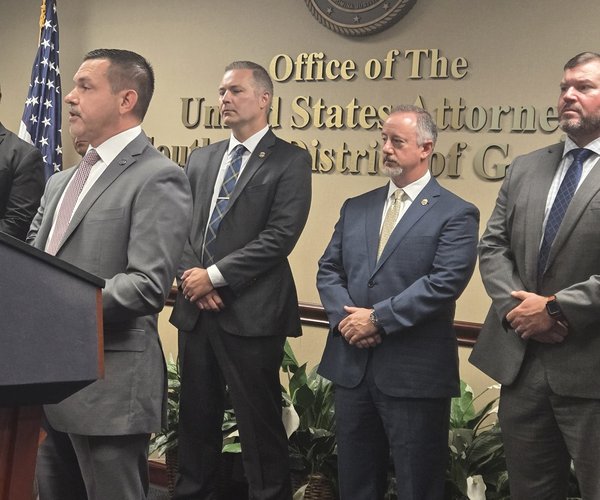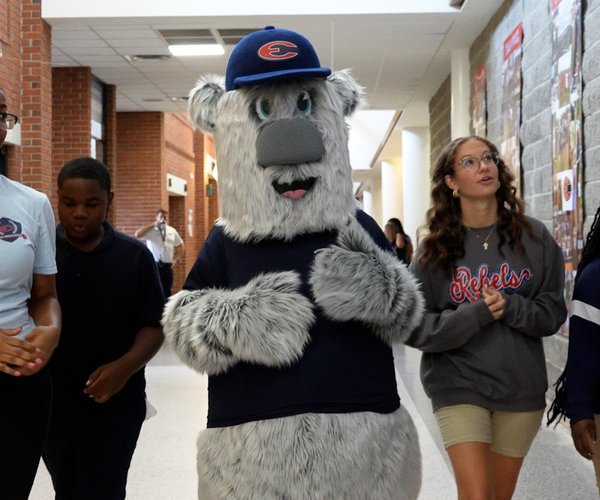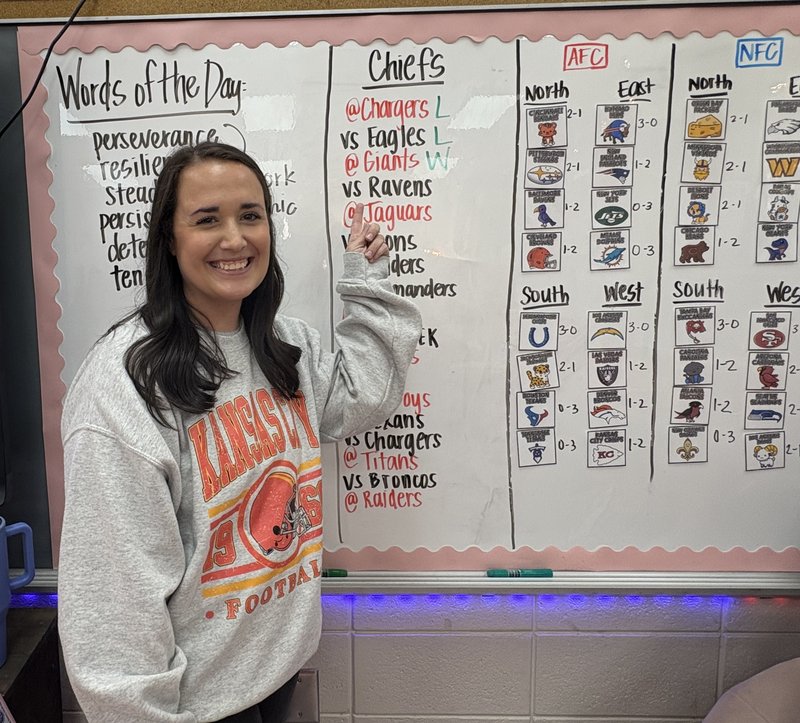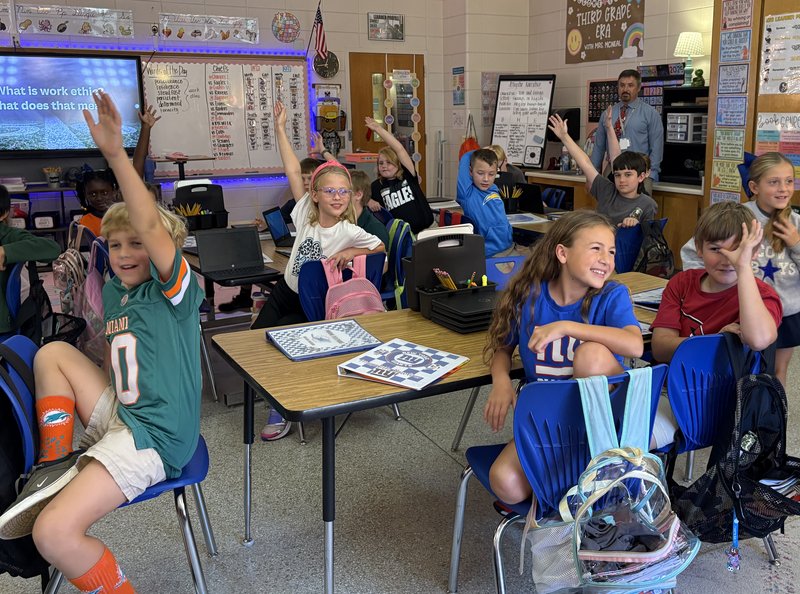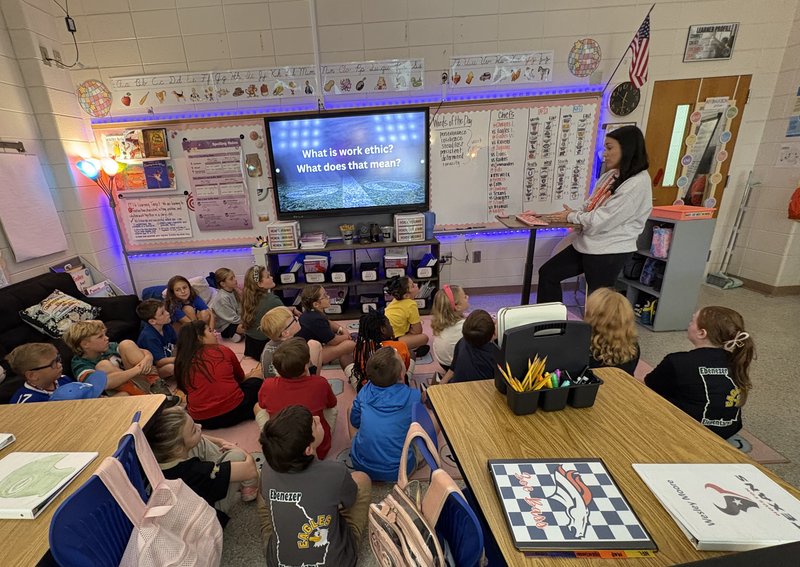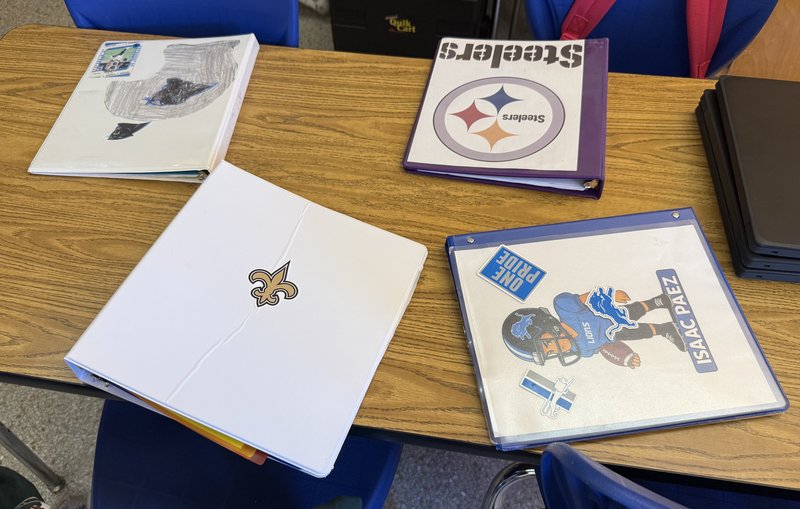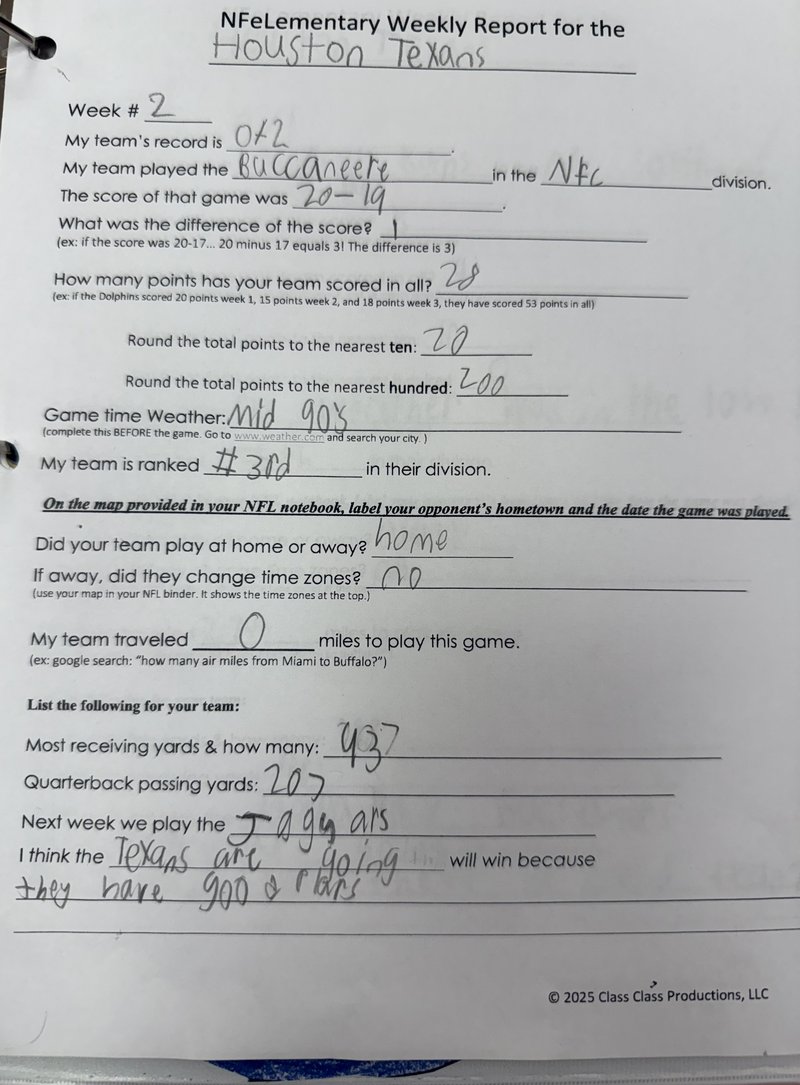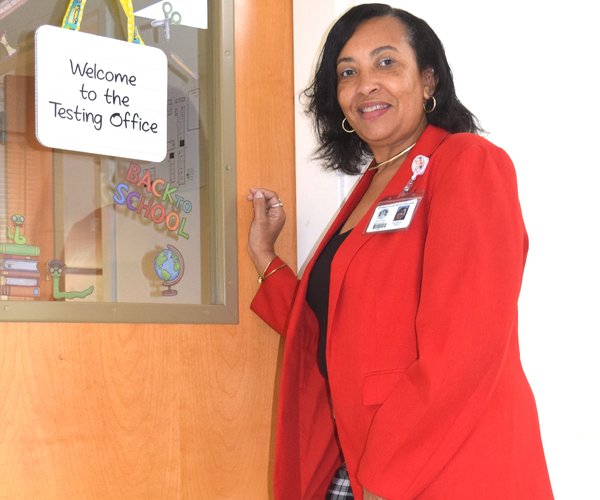Georgia Southern University could become southeast Georgia’s equivalent of the University of Georgia within the next couple of decades, according to school president Dr. Bruce Grube.
“In 30 years, what you’ll have is a University of Georgia equivalent,” Grube told the Rotary Club of Effingham on Thursday, “and this part of the country needs it.”
Grube, who has been president of GSU since 1999, said the area of the state generally south of the fall line hasn’t been treated fairly in the allocation of resources.
“The ripple effect of that is tremendous,” he said.
Georgia Southern has satellite campuses in Dublin, Brunswick and Hinesville and partners with Armstrong Atlantic and Savannah State in the Coastal Georgia Center in Savannah. An Effingham campus isn’t in the cards, Grube said, because of the proximity of Effingham to Statesboro.
When he assumed the reins of the state’s now fourth-largest school, Grube embarked on a six-
pronged attack to make GSU better. He wanted to focus on academic distinction, student-centricness, technology, transcultural opportunities, public-private partnerships and improving the campus’ physical environment.
“Georgia Southern has had a period of change in its last eight years that is unprecedented in its history,” Grube said, noting the school is celebrating its centennial this year. “Will is a very important ingredient and you can get a lot of things done. I believe that quality will follow quality. That was a little bit of a hard sell at first, but it turned out to be true.”
Since his arrival, GSU’s average SAT score for entering freshmen has risen from 987 to 1,104. Meanwhile, the school’s enrollment has boomed, surging over 16,000 for the fall 2006 term.
“In this time of increasing the admission standards, you would think we would have narrowed the market available to us,” Grube said. “To the contrary, we have added almost 2,500 students from 2000.”
Raising faculty standards
The school also has earned Carnegie Research University status and it has bolstered its ranks of professors and instructors.
“We have hired phenomenal faculty,” Grube said. “So when we talk about academic distinction, it’s not the just the improvement of the students but the improvement of the faculty and the resources that are there for the students.”
Georgia Southern is in the midst of a massive renovation of the Henderson Library. The cost of the expansion is $23 million and the new building will have 240,000 square feet to hold more than 1 million items.
The library also has a unique robotic retrieval system for books and periodicals that are not frequently checked out. Instead of taking up shelf space, and taking up students’ and library workers’ time to find them, a library technician puts in a code and a robot pulls down a bin with the item.
“The addition of the library, the way we’re doing it, will extend the life of the library by 75 years,” Grube said. “It’s the center of academic resource for all your academic programs. If you can improve it, you improve everything.”
He also boasted that GSU’s graduate nursing program is ranked 11th in the country, “way ahead of Emory and way, way ahead of the Medical College of Georgia,” he said.
Customers first
One of the things he wanted faculty and staff to work on when he got to Statesboro was keeping the students first.
“Help them any way you can,” he said. “They are our customers.”
But as the college more than doubled in size in less than 20 years, Grube also didn’t want the growth to lead to anonymity for the students.
Now, the majority of GSU students graduate having had a research experience with their professors.
“As we grew in size, we were determined we didn’t lose the high touch (between students and professors),” Grube said. “Keeping that high touch piece is real important to us.”
On the cutting edge
High tech has been important, too, and Georgia Southern has the Southeast’s only College of Information Technology.
The College of IT was formed with the backing of then-Gov. Roy Barnes and university system leaders, who saw it as an economic development tool for the Coastal Empire.
“We want (the students) to be able to step into the workplace ahead of the curve, not behind it,” Grube said. “It also extends into the partnerships with the communities in the intent to build job infrastructure. We’re there for the communities that support us.”
He also said the school tries to give its students as much of an international flavor to their curriculum as possible, something that was driven home in a visit to Georgia Southern’s sister school outside of Munich, Germany. There, he met with executives from the carmaker Audi, who wanted American students to run their operations in such far-flung places as Singapore.
“We live in such a diverse world,” Grube said. “Audi had made a decision that to remain competitive, their next generation of leaders had to be international in scope. Many of our students, when they they go work, will have global connections.
“We’re trying to expose our students broadly. One of the best things you could do is to get them an international experience. There is nothing else that can educate them about so many things so quickly.”
University leaders also decided as they put their new approach into place to find different ways to get the things they needed.
“We decided it wasn’t worth whining, that if we couldn’t help ourselves, we couldn’t turn to the legislators and say, ‘you guys aren’t doing enough to help us,’” Grube said.
With that, the school has joined with Statesboro, Bulloch County, the Statesboro-Bulloch County Development Authority and private enterprises for $186 million in facilities projects.
The university just finished a capital fundraising campaign, much of which was to endow scholarships that will help students who fall just short of HOPE Scholarship standards to attend GSU.
“Endowed scholarships are very important to us,” Grube said. “Today, there is nothing like the HOPE Scholarship. There is no excuse not to get a college education.”
When the school started its campaign, it had a goal of $35 million. “We stretched it to $45 million and we came in at $53 million,” Grube said.
The money raised will go to an endowment for the honors program and the establishment of an honors college.
Building boom
But bricks and mortar had to go with the mortarboards. The college has built apartment-style residences for its students, a 135,000 square foot addition to its Recreation Activity Center and a $7 million, 30,000 square foot addition to the Fine Arts Building, in addition to a new chemistry building and the College of IT.
“In this day and age, you are judged by your cover. If you didn’t look first class, you weren’t perceived as first class,” Grube said.
In the last eight years, GSU has added $300 million in new facilities.
“It’s gorgeous, and we’re not through yet,” Grube said.
He also said the school wants to have an impact on making the region better. The Center for Survey Research and Health Information is helping community organizations create, administer and analyze surveys, and the Jiann-Ping Hsu College of Public Health and the Southwest Georgia Cancer Coalition are working on projects to improve access and cancer care for 33 counties.
The school’s economic impact is estimated at $653 million a year, a figure Grube called conservative.
“We intend to be the best possible neighbor we can be,” he said. “I see us as being part of larger community.”
Grube, who has led the institution after coming from St. Cloud State University in St. Cloud, Minn., said it’s also his intention to retire as Georgia Southern president.
“We’ve such good things happen,” he said, “the thought of going somewhere else doesn’t enter our list.”



